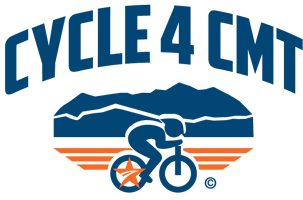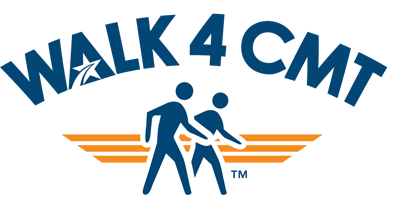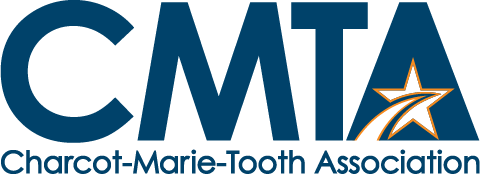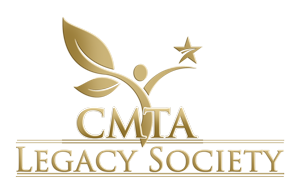CMT4
Below we share with you the research projects the CMTA is currently funding as well as a description of the remarkable STAR Biotech Alliance Partners with whom we collaborate to advance research for CMT.
View the projects currently active or recently completed in the CMT4 drug development pipeline.
CMT4A Research
CMT Type 4A is caused by mutations in the GDAP1 gene. This gene has been found to cause CMT4A (recessive, demyelinating, axonal or intermediate CMT – about 75 percent of people with GDAP1 mutations), and CMT2K (dominant axonal CMT – about 25 percent of people with GDAP1 mutations). People with CMT4A have onset of symptoms in the first two decades of life, most before age 10. Symptoms affect both lower and upper limbs, including muscle wasting and contractures, and delayed milestones such as sitting and walking. Most people need walking assistance, such as AFOs, canes or walkers, by 30 years of age, and about 75 percent use a wheelchair after 30 years. As the disease progresses, a hoarse voice can develop and vocal cord paresis have been reported. Life expectancy and intelligence are not affected.
ESTABLISH PRELIMINARY INDICATION OF AAV9/GDAP1 EFFICACY AND SAFETY USING IN VITRO EMBRYONIC MOTOR NEURONS (EMNS) AND DORAL ROOT GANGLIA NEURONS (DRGS) CULTURE FROM GDAP1 MICE AND IN IN VIVO WILD-TYPE (WT) MICE
Grant Amount: $227,170
Principal Investigators: Steven Gray, PhD, University of Texas Southwestern Medical Center; Xin Chen, PhD, University of Texas Southwestern Medical Center

To develop and validate AAV vector expressing GDAP1, Drs. Gray and Chen will test the efficacy and safety of AAV9/GDAP1 in cultured motor neurons and dorsal root ganglia from GDAP1 mutant mice. They will also test the safety and identify potential adverse events of intrathecal (IT) administration of AAV9/GDAP1 in young adult WT C57BL/6j mice.
CMT4A BIOTECH ALLIANCE PARTNER ENVIGO
The CMTA has established a unique capability to develop new therapies directly with companies and research labs, and to expertly test those potential therapy candidates. This allows a company or research lab interested in positioning a therapy for CMT to access the infrastructure needed to evaluate the therapy without committing significant time and money up front. The CMTA is creating a best-in-class rat model of CMT4A so, once characterized, we know when to test a drug or gene therapy, for how long and what signifiers of improvement need to be measured. We currently have 6 other animal models available and work with expert contract research organizations to engage to perform the testing under CMTA direction and our agreement structure lowers common barriers to entry such as confidentiality, retention of intellectual property and long-term financial commitment.
CMT4A BIOTECH ALLIANCE PARTNER TAYSHA GENE THERAPIES
The CMTA has given a venture philanthropy grant to Taysha Gene Therapies (Nasdaq: TSHA), a patient-centric, pivotal-stage gene therapy company focused on developing and commercializing AAV-based gene therapies for the treatment of monogenic diseases of the central nervous system (CNS) in both rare and large patient populations, for undertaking a CMT4A gene therapy project.
Taysha and the CMTA will jointly fund the project at UT Southwestern under the direction of Drs. Xin Chen and Steven Gray (co-principal investigators). The goal of the project is to directly deliver the GDAP1 gene with adeno-associated viral 9 (AAV9) to stop the neuropathy that happens in CMT4A. The findings from this project will be critical in advancing research that will potentially lead to clinical trials for CMT4A patients.
CMT4B
The genetic location for the defect causing Type 4B is on chromosome 11 and presents with focally folded myelin sheaths in nerve biopsies. Affected patients become symptomatic early in life, with an average age of onset at 34 months. Unlike most types of CMT, both proximal and distal weakness is common.
NIACIN TREATMENT OF FOCAL HYPERMYELINATING NEUROPATHIES AND PROSPECTIVE CLINICAL STUDY ON CMT4B
Grant Amount: $201,000
Principal Investigator: Alessandra Bolino, PhD, Ospedale San Raffaele, Milan

Dr. Bolino will explore treating CMT4B1 and CMT4B2 with an FDA approved drug and conduct studies with CMT4B1 and 4B2 patients to better understand the natural progression of the disease and help prepare for clinical trials in the future.
ENGINEER/TEST PROMOTERS TO CONTROL EXPRESSION OF THE TARGET GENE BEING DELIVERED TO SCHWANN CELLS BY AN AAV VIRUS
Grant Amount: $154,000
Principal Investigators: John Svaren, PhD, University of Wisconsin; Kleopas Kleopa, MD, Cyprus Institute of Neurology & Genetics, Nicosia, Cyprus; Steven Gray, PhD, University of Texas Southwestern Medical Center

In order to optimize gene therapy approaches for the Type 1 demyelinating CMT neuropathies, there are important challenges to be overcome which include 1) The development of safe viral vectors (the gene “package” delivered by a virus to cells) and 2) the identification of viruses that can deliver a vector to peripheral nerve and enter Schwann cells with high efficiency.
The proposed experiments will seek to enable a translatable gene therapy approach for CMT1A, CMT1X, and various CMT4 forms. This will also be the first testing of AAV9 virus distribution to Schwann cells in a larger animal model (primate).
CMT4C
What is CMT4C?
CMT4C is an autosomal recessive form of CMT due to mutations in the SH3TC2 gene. Although a rare type of CMT, CMT4C is the most common autosomal recessive demyelinating subtype. Symptoms often begin in childhood and include progressive scoliosis, a curvature of the spine that may require surgery. Individuals with CMT4C frequently experience moderate to severe weakness and sensory impairment in the limbs, which can affect walking, balance, and hand coordination.
Cranial nerves are sometimes affected, leading to eye movement, facial expressions, hearing, and speech difficulties. These challenges are linked to oculomotor, facial, auditory, and hypoglossal nerve impairments, respectively. While the age at symptom onset, severity, and progression of CMT4C can vary, it is usually diagnosed in childhood.
What Are the Latest CMT4C Treatments and Research Advances?
The CMTA-funded work of CMTA-STAR Advisory Board member Kleopas Kleopa, MD, at the Cyprus Institute of Neurology and Genetics in Cyprus, has shown the potential for successful gene therapy in a CMT4C model. This promising approach could address the lack of effective treatments for CMT4C. Dr. Kleopa is continuing these studies toward clinical trials, which aim to deliver this novel therapy not only for CMT4C but also for other demyelinating types of CMT, including CMT1A and CMTX1.
CMTA recently convened a gene therapy workshop with Dr. Kleopa and other leading experts, including CMTA-STAR Advisory Board member Steven Gray, PhD, from the University of Texas Southwestern in Dallas, TX. The group developed a strategic plan to translate these findings into human clinical trials for CMT4C, which CMTA is actively advancing.
CMT4C Projects
AAV MEDIATED GENE THERAPY FOR CMT4C
Grant Amount: $122,100
Principal Investigator: Kleopas A. Kleopa, MD, Cyprus Institute of Neurology & Genetics

Dr. Kleopa tested the feasibility of an AAV-mediated genetic therapy approach for CMT4C in animal models. This proof of principle study investigated early and late stage intervention with the assessment of cellular targeting and outcomes.
FORESEE the End of 4C Project: Accelerate Gene Therapy for CMT4C Patients
Total Projected Cost: $6.5M over 3 years, including an initial clinical trial
Principal Investigator: Steven Gray, PhD, the University of Texas Southwestern

CMTA is supporting an ambitious, donor-driven project plan to accelerate the development of gene therapy for CMT4C from animal studies through clinical trials. CMTA-STAR Advisory Board member Steven Gray, PhD, will lead this comprehensive program at the University of Texas Southwestern in Dallas, TX.
Building on CMTA-funded research by fellow CMTA-STAR Advisory Board member Kleopas Kleopa, MD, at the Cyprus Institute of Neurology and Genetics in Cyprus, which demonstrated promising results in CMT4C models, Dr. Gray’s project addresses the rigorous safety and regulatory steps required to bring gene therapy closer to patients. With guidance from FDA consultations, the project will tackle critical stages, including safety testing, manufacturing, and clinical trial design.
This effort begins with IND-enabling studies, which the FDA requires to prepare for clinical trials. IND stands for “investigational new drug.” These studies ensure readiness for clinical testing and manufacturing, progressing toward trials in patients. A project team, including Dr. Gray, Dr. Kleopa, and CMTA senior leadership, has partnered with a highly committed donor to champion this initiative for the CMT4C community.
The research team successfully held a Type B pre-IND meeting with the FDA, receiving positive feedback that confirmed the next steps toward an Investigational New Drug (IND) application. Preparations are underway for drug manufacturing and formal preclinical toxicology studies, both critical components of the IND submission process.
Project Updated: February 18, 2025
CMTA-STAR Accelerates Progress Toward Transformative Treatments for CMT4C
Through these ambitious efforts, CMTA-STAR is driving groundbreaking progress toward effective treatments for CMT4C and other forms of Charcot-Marie-Tooth disease. By uniting world-class researchers, committed donors, and the CMT community, we are turning scientific breakthroughs into real hope for patients and families affected by CMT4C. Together, we are accelerating the path to transformative therapies and a brighter future for all.
This project is part of CMTA’s donor-driven effort to accelerate genetic therapy development for CMT4C, bridging the gap between preclinical research and clinical application.
Get Involved: Become a CMTA Patient Partner
Your participation in research is invaluable to progress towards understanding and treating CMT. CMTA’s Patients as Partners in Research program offers a unique opportunity to contribute to critical CMT4C studies. By joining, you help researchers develop new treatments and improve the quality of life for everyone living with CMT. Together, we accelerate the research that brings us closer to effective treatments and, ultimately, a cure.
CMT4J
CMT4J is caused by mutations in a gene called FIG4, which is located on chromosome 6. This is a rare form of CMT that wasn’t identified until 2007. Because not many people have this form, our understanding of how it progresses is limited. Symptoms and age of onset are variable; some people have a classic presentation, while others have a slowly progressive neuropathy with more severe changes later in adulthood. CMT4J causes intermediate to slow nerve conductions due to changes in the myelin, the sheath around the nerve “wire.” It is an autosomal recessive form of CMT (CMT4), which means an individual has to have a mutation in each copy of the gene (one from each parent) in order to have symptoms. Not all changes in FIG4 cause disease, however. If one of an individual’s two mutations is benign, he or she would not have CMT4J. CMT4J is frequently misdiagnosed as or co-diagnosed with CIDP (chronic inflammatory demyelinating polyneuropathy). Individuals with CIDP may want to discuss further genetic testing to rule out types of CMT.
CMT4J ALLIANCE PARTNER: CURECMT4J/TALIA DUFF FOUNDATION/ELPIDA THERAPEUTICS
CureCMT4J/Talia Duff Foundation/Elpida Therapeutics is dedicated to advancing treatments for CMT4J. The following areas are in development:
CMT4J NATURAL HISTORY STUDY: CureCMT4J is working with Elpida Therapeutics SPC and the CMTA to observe and understand the progression of CMT4J over time. By tracking the natural course of the disease, researchers aim to discover how CMT4J affects individuals and to identify reliable measures of disease progression. By learning more about the disease’s natural history, this study seeks to fill critical knowledge gaps, which could lead to better care and potential treatments. For more information and to take part in this natural history study visit our Patients as Partners in Research listing.
CMT4J NATURAL HISTORY STUDY: sponsored by Neurogene. This study has ended. The data is being analyzed for useful information about how CMT4J presents and progresses in patients over time. Its learnings will inform future natural history studies, clinical trials and other research for CMT4J.
AAV9 MEDIATED GENE THERAPY FOR CMT4J: Gene Therapy uses viral vectors, where a benign virus acts as a delivery mechanism to bring healthy copies of the missing FIG4 gene to cells in the body. Preclinical proof of concept in mouse models has shown success (published here: https://pubmed.ncbi.nlm.nih.gov/33878035/). A human clinical trial is the next step. CureCMT4J is awaiting notification from the National Institutes of Health (NIH) on its inclusion in the NIH’s Bespoke Gene Therapy Consortium platform.
CMT4J/FIG4 BIOMARKER IDENTIFICATION: CureCMT4J is working with The Jackson Laboratory, the University of Michigan, CMTA, and other entities to identify ways to measure disease progression, disease severity, and/or response to treatments.
CMT4J/FIG4 DRUG REPURPOSING PROJECT: CureCMT4J funded research with biotech partner Modelis to create and analyze CMT4J worm models for their use in identifying existing drugs that could help patients with CMT4J. Results of this project are expected in 2023.
Read about the Patients as Partners in Research Initiative ⟶





